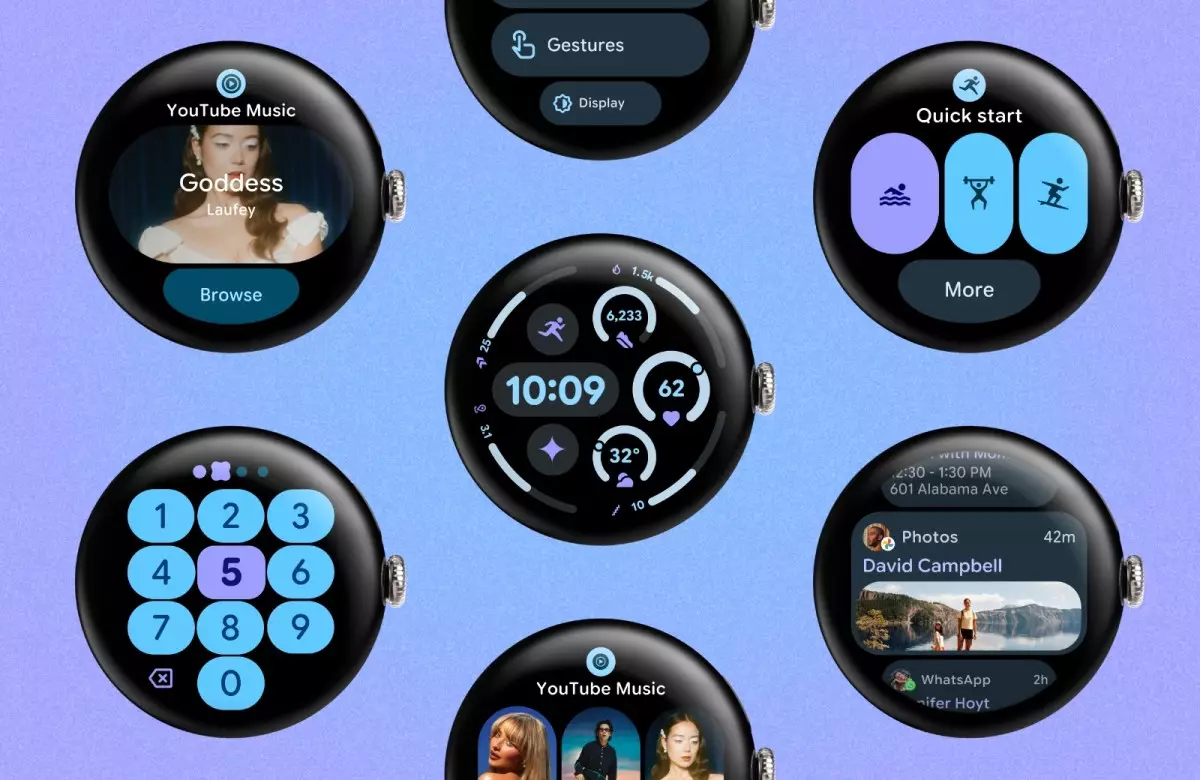Google’s recent unveiling of Gemini for Wear OS marks a significant stride toward redefining how consumers interact with their smartwatches. This rollout isn’t just about adding another AI feature—it signifies a strategic shift aimed at replacing the familiar Google Assistant with a more sophisticated, integrated AI system. The timing of this move, set nearly two months after hints in May, underscores Google’s determination to stay at the forefront of wearable technology.
The scope of Gemini’s integration across popular brands such as Pixel, Samsung, OPPO, OnePlus, and Xiaomi illustrates Google’s understanding of the importance of ecosystem-wide transformation. When users speak “Hey, Google,” or press specific buttons, they are now entering a new realm of personalized assistance—one that promises more contextually aware, conversational interactions, even on small screens. It’s both an upgrade and a bold gamble, trusting AI’s burgeoning capabilities to take center stage in daily routines.
What sets Gemini apart isn’t just its voice recognition or task management features—it’s the way it strives to make the smartwatch a more intuitive extension of its user’s life. Asking Gemini for a cooking timer or weather updates feels mundane, but the real power lies in its potential for multitasking. Asking Gemini to summarize emails or plan daily activities demonstrates a push toward seamless cross-application integration, transforming the watch from a mere notification hub into an intelligent productivity tool.
Enhancing Search and Exploration with Circle to Search and AI Mode
Google’s “Circle to Search” feature, introduced last year, is getting a hefty upgrade—adding AI Mode-driven reasoning that allows users to perform more complex visual searches without toggling between apps. This development reflects Google’s effort to keep users engaged with visual discovery, especially when on a mobile device. The ability to highlight, circle, or scribble on images and then instantly access AI-generated summaries signifies a move toward more natural, visual-based searches.
The new AI Mode isn’t just about quick answers; it’s about layered, in-depth exploration. After initiating a search via Circle to Search, users are presented with an AI Overview that can be further expanded to ask follow-up questions, dive into details, or analyze images with more nuance. This creates an environment where Google Lens and AI converge, empowering users to go beyond superficial queries and understand the intricacies of what they see.
The broader accessibility of AI Mode in Google Lens—now on both Android and iOS—illustrates Google’s strategy to democratize advanced AI capabilities. These features are not confined to a single device or OS, but are designed to work holistically across ecosystems, tapping into the company’s deep integration ambitions. The implications are significant: users can now identify game characters, strategize while gaming, or get instant insights on objects and scenes without breaking flow.
More Than Just Features: Google’s Vision for a Smarter, More Integrated Future
Google’s investments in these AI features reflect a broader aspiration—an ecosystem where AI seamlessly assists, simplifies, and enhances all digital interactions. The improvements to AI Overviews, including better formatting and visual aids, indicate Google is keen on making AI responses more digestible and engaging. Better formatting and visual inclusions can turn long blocks of information into usable knowledge at a glance, avoiding cognitive overload.
The most intriguing aspect lies beneath the surface: Google’s commitment to replacing Google Assistant with Gemini as its core AI assistant across devices portends a future where AI is less a tool and more an intelligent collaborator. This shift could fundamentally alter user expectations, blurring the lines between AI and human-like reasoning in everyday life.
Furthermore, the offer of a free year of Google AI Pro subscription to Pixel 9 Pro owners positions Google as a content creator, not just a search engine. With Veo 3, users can translate ideas into short videos, adding a creative dimension to AI’s utility. This move signals Google’s ambitions beyond information delivery—Into content creation and entertainment, zones traditionally dominated by standalone apps or services.
Google’s recent announcements demonstrate a clear strategy: leverage AI’s growing sophistication to foster deeper, more meaningful user engagement across all platforms. Whether it’s transforming a smartwatch experience, enhancing visual searches, or offering new creative tools, Google aims to redefine how we perceive and interact with AI—placing it at the core of our digital lives with confidence and ambition.

